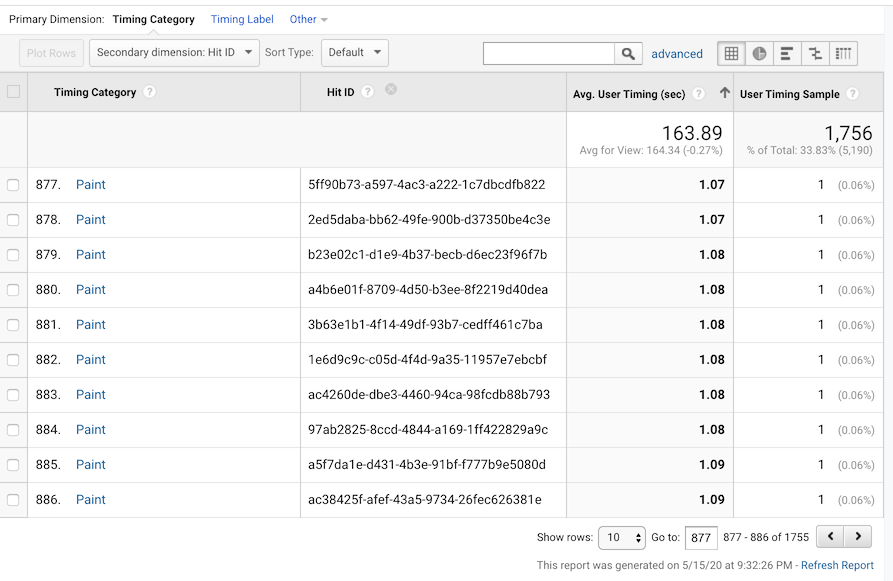Comprehensive Insights Making Use Of Secondary Dimension in Google Analytics
Comprehensive Insights Making Use Of Secondary Dimension in Google Analytics
Blog Article
Enhance Your Data Evaluation Using Second Measurement in Google Analytics
Exploring the capacities of additional measurements in Google Analytics opens a world of opportunities for refining data analysis. By layering added dimensions onto main information sets, an even more detailed narrative arises, dropping light on user interactions and performance signs.
Understanding Second Measurements
Additional measurements in Google Analytics refer to added criteria that can be included to the primary measurement, permitting for a more comprehensive evaluation of information (Secondary Dimension in Google Analytics). By integrating second measurements, experts can section and filter data to discover patterns, patterns, and connections that could not be apparent when looking at the data as a whole.

Advantages of Using Additional Measurements
When assessing data in Google Analytics, the usage of second measurements offers vital understandings into customer habits and efficiency metrics. By including an additional dimension to your primary information, you can delve deeper into the attributes of your website site visitors and their interactions.
Furthermore, additional measurements help in identifying patterns and relationships that may not be immediately evident when considering the data in isolation. This deeper degree of analysis can reveal important details that can direct advertising and marketing strategies, website optimization, and general organization decisions. In addition, secondary dimensions boost the context of your key data, giving a much more comprehensive sight of individual interaction and efficiency metrics. Overall, using secondary measurements in Google Analytics can substantially improve the depth and quality of your data analysis, resulting in even more informed decision-making and improved outcomes.
How to Include Second Dimensions
By incorporating second measurements in Google Analytics, customers can gain deeper understandings into their information analysis process, permitting for more extensive analysis of user behavior and performance metrics. Adding second measurements is an uncomplicated process that can dramatically boost the depth of evaluation. To include a second dimension in Google Analytics, start by browsing to the record you intend to assess. Once in the record, situate the "Secondary dimension" tab above the data table. Click on it to reveal a dropdown menu with various choices such as Behavior, Technology, and Custom Dimensions. Select the dimension you intend to include, such as 'Source/Medium' or 'Tool Group'. This second measurement will certainly after that be put on your existing data, providing extra context and permitting a much more thorough evaluation of user communications. By using secondary measurements properly, individuals can reveal beneficial understandings that may have or else been forgotten, bring about educated decision-making and boosted efficiency strategies.
Studying Information With Second Dimensions
Utilizing secondary dimensions in information analysis supplies a much more comprehensive understanding of individual actions and efficiency metrics. By including an additional dimension to your primary data embeded in Google Analytics, you can delve deeper into the qualities of your site visitors and their interactions. Integrating the main measurement of 'source/medium' with the additional dimension of 'touchdown page' can reveal which certain pages are bring in website traffic from different resources, aiding you enhance these pages for much better engagement.

In significance, examining information with second dimensions empowers you to acquire useful insights right into individual actions, determine fads, and make educated choices to improve the efficiency of your digital residential or commercial properties.
Best Practices for Additional Dimensions
In data evaluation, including additional dimensions effectively can significantly boost the deepness of insights stemmed from metrics and individual habits patterns. When utilizing second dimensions in Google Analytics or any type of various other logical device, it is vital to comply with best practices to make sure the accuracy and significance of the data analysis.
One trick ideal technique is to carefully choose second dimensions that complement the key dimension being evaluated. Choosing additional measurements that offer added context or further division can provide an extra detailed understanding of the information. It is also vital to prevent overcomplicating the evaluation by including a lot of second dimensions, which might lead to complication or dilution of understandings.
Additionally, it is suggested to explore various combinations of primary and additional measurements to uncover brand-new connections and patterns. On a regular basis improving the selection and assessing of second measurements based on the particular goals of the evaluation can other lead to even more actionable insights. By following these ideal methods, data analysts can take advantage of second measurements effectively to improve the total information analysis process and decision-making capacities.

Verdict
To conclude, incorporating additional dimensions in Google Analytics is vital for a thorough information analysis technique. By leveraging secondary measurements together with primary ones, marketing experts and experts can reveal valuable understandings and correlations that can notify decision-making and enhance digital advertising and marketing strategies. Recognizing exactly how to effectively use additional measurements and complying with best techniques will certainly enable experts to draw out meaningful information and enhance their general efficiency metrics.
Secondary dimensions in Google Analytics refer to added parameters that can be added to the primary measurement, enabling for a much more detailed analysis of data. By including second dimensions, experts can sector and filter information to reveal patterns, fads, and correlations that might not be apparent when looking at the information as a whole. Integrating the key dimension of 'source/medium' with the secondary measurement i loved this of 'landing web page' can disclose which details web pages are attracting traffic from different resources, helping you optimize these pages for better involvement.
One key finest technique is to carefully select secondary dimensions that match the primary measurement being assessed. By adhering to these finest practices, data analysts can leverage second measurements successfully to boost the general information evaluation procedure and decision-making abilities.
Report this page